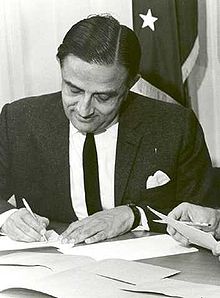Astronomy - Knowing Indian Space Research Organisation (ISRO)
The Indian Space Research Organisation(ISRO, /ˈɪsroʊ/), is the space agency of the Government of Republic of Indiaheadquartered in the city of Bengaluru. Its vision is to "harness space technology for national development", while pursuing space science research and planetary exploration.
Formed in 1969, ISRO superseded the erstwhile Indian National Committee for Space Research (INCOSPAR)established in 1962 by the efforts of independent India's first Prime Minister, Jawaharlal Nehru, and his close aide and scientist Vikram Sarabhai. The establishment of ISRO thus institutionalised space activities in India. It is managed by the Department of Space, which reports to the Prime Minister of The Republic of India.
ISRO built India's first satellite, Aryabhata, which was launched by the Soviet Union on 19 April 1975. In 1980, Rohini became the first satellite to be placed in orbit by an Indian-made launch vehicle, SLV-3. ISRO subsequently developed two other rockets: the Polar Satellite Launch Vehicle (PSLV) for launching satellites into polar orbits and the Geosynchronous Satellite Launch Vehicle (GSLV) for placing satellites into geostationary orbits. These rockets have launched numerous communications satellites and earth observation satellites. Satellite navigation systems like GAGAN and IRNSS have been deployed. In January 2014, ISRO successfully used an indigenous cryogenic engine in a GSLV-D5 launch of the GSAT-14.
ISRO sent one lunar orbiter, Chandrayaan-1, on 22 October 2008 and one Mars orbiter, Mars Orbiter Mission, which successfully entered Mars orbit on 24 September 2014, making India the first nation to succeed on its first attempt, and ISRO the fourth space agency in the world as well as the first space agency in Asia to successfully reach Mars orbit. Future plans include development of GSLV Mk III,(for launch of heavier satellites), ULV, development of a reusable launch vehicle, human spaceflight, further lunar exploration, interplanetary probes, a solar spacecraft mission, etc. As of 24 June 2016, ISRO has launched 131 satellites using indigenously developed launch vehicles out of which 74 are foreign. Also, 29 Indian satellites have been launched by foreign launch vehicles. As of October 2015, ISRO has agreed to launch 23 foreign satellites of nine different nations including Algeria, Canada, Germany, Indonesia, Japan, Singapore and the US. On 18 June 2016 India successfully set a record with launch of 20 satellites in a single payload, one being a satellite from Google.
Formative years

Vikram Sarabhai, first chairman of INCOSPAR, which would later be called ISRO
Modern space research in India is most visibly traced to the 1920s, when the scientist S. K. Mitra conducted a series of experiments leading to the sounding of the ionosphere by application of ground based radio methods in Calcutta. Later, Indian scientists like C.V. Raman and Meghnad Sahacontributed to scientific principles applicable in space sciences. However, it was the period after 1945 which saw important developments being made in coordinated space research in India. Organised space research in India was spearheaded by two scientists: Vikram Sarabhai—founder of the Physical Research Laboratory at Ahmedabad—and Homi Bhabha, who established the Tata Institute of Fundamental Research in 1945. Initial experiments in space sciences included the study of cosmic radiation, high altitude and airborne testing of instruments, deep underground experimentation at the Kolar mines—one of the deepest mining sites in the world – and studies of the upper atmosphere. Studies were carried out at research laboratories, universities, and independent locations.
In 1950, the Department of Atomic Energy was founded with Homi Bhabhaas its secretary. The Department provided funding for space research throughout India. During this time, tests continued on aspects of meteorology and the Earth's magnetic field, a topic which was being studied in India since the establishment of the observatory at Colaba in 1823. In 1954, the Uttar Pradesh state observatory was established at the foothills of the Himalayas. The Rangpur Observatory was set up in 1957 at Osmania University, Hyderabad. Space research was further encouraged by the technically inclined Prime Minister of India, Jawaharlal Nehru. In 1957, the Soviet Union successfully launched Sputnik and opened up possibilities for the rest of the world to conduct a space launch.
The Indian National Committee for Space Research (INCOSPAR) was set up in 1962 by Jawaharlal Nehru, India's first Prime Minister. It had Vikram Sarabhai as its chairman. The first rocket launch into space from Indian soil took place on 21 November 1963 under the leadership of project scientist Praful Bhavsar. INCOSPAR eventually grew into ISRO in 1969.
Goals and objectives
The prime objective of ISRO is to develop space technology and its application to various national tasks.[1]The Indian space programme was driven by the vision of Vikram Sarabhai, considered the father of the Indian Space Programme. As he said in 1969:
The former Indian President A. P. J. Abdul Kalam said:
India's economic progress has made its space programme more visible and active as the country aims for greater self-reliance in space technology. In 2008 India launched as many as 11 satellites, including nine from other countries and went on to become the first nation to launch 10 satellites on one rocket." ISRO has successfully put into operation two major satellite systems: Indian National Satellites (INSAT) for communication services and Indian Remote Sensing (IRS) satellites for management of natural resources.
In July 2012, the former President, A. P. J. Abdul Kalam said that research was being done by ISRO and DRDO for developing cost reduction technologies for access to space.

No comments:
Post a Comment